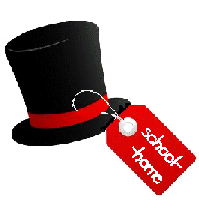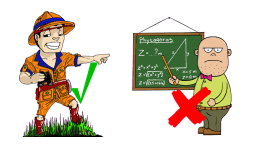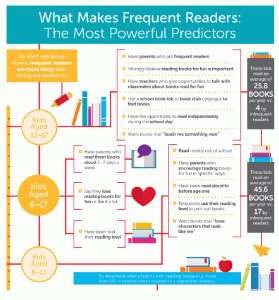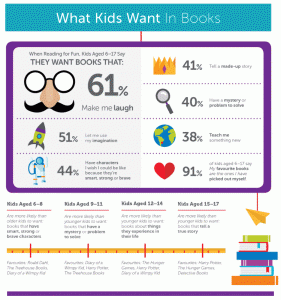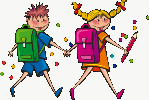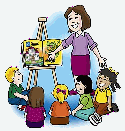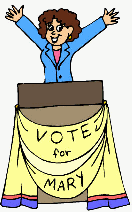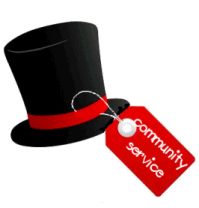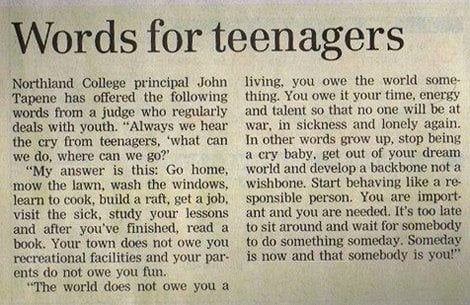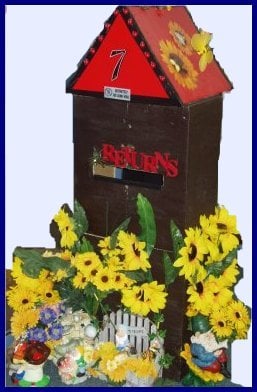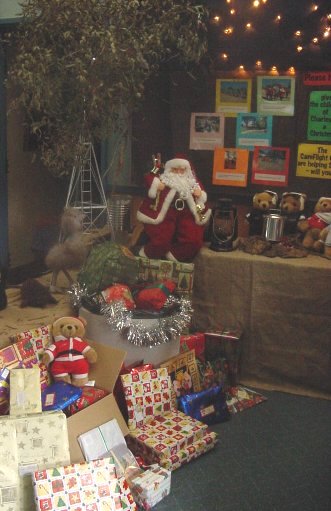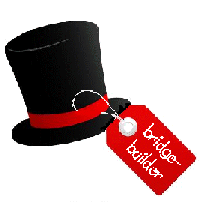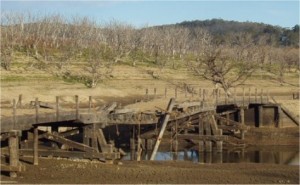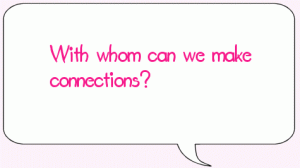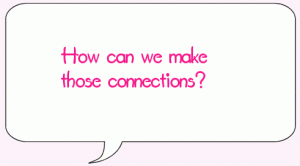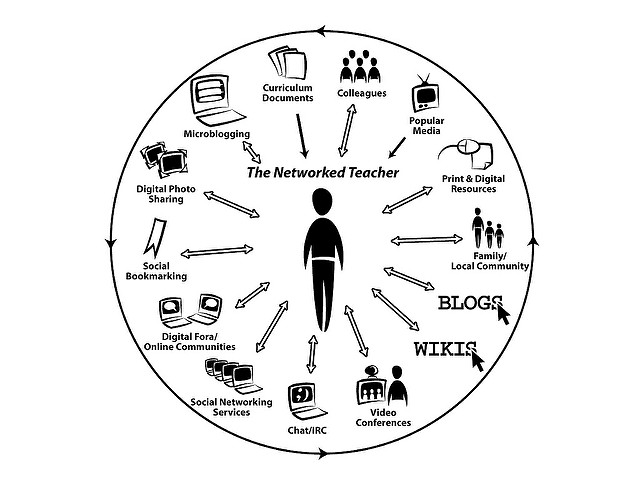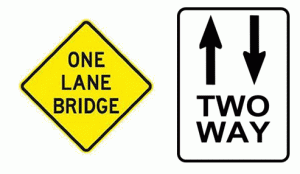
Paperwork can be a pain – so much so, it often gets left at the bottom of the in-tray or filed in the too-hard basket.
However, I believe it is an essential part of our job as we are so often the only one of us in the role in the school and there is much that we do that is a mystery to those who are unfamiliar with the L side of TL. Paperwork allows for continuity and consistency of policy, procedures and practice even when the personnel changes. It can be used to explain and defend decisions by showing that they are based on accepted best-practice in library circles.
Paperwork also provides possibilities to explore and to reflect. As we construct policies , procedures and programs and align them to fit the specific situation we are in there is an opportunity to examine why we do what we do and, if necessary, explore other ways to do it. For example, many are choosing to switch their shelving arrangements to one driven by genre rather than author and while there are many questions that need to be satisfied before that, or any other major change, is made, nevertheless it provides the motivation to consider different practices.
But paperwork is so much more than a Collection Policy and a Procedures Manual glanced at occasionally and amended every now and then.
Purpose
In The 7 Habits of Highly Effective People, Stephen Covey tells us to “begin with the end in mind” so all the steps we take are leading in the right direction. Therefore it is critical to explicitly identify the purpose that the library serves within the learning community. Return to The Visionary’s Hat for ideas about examining the current place and perception of the library’s role and then construct a mission statement that clearly establishes
- what this library is about
- what it stands for
- how that is demonstrated
The mission statement is the basis for all decisions made regarding policy, procedures and practice and sets the guidelines and parameters for the services you offer.
If the purpose of the library now is different from what it should be, then create a vision statement and a strategic plan so that your mission statement can be achieved. Because a mission statement should be a brief, broad, big-picture concept, there will always be a gap between what is and what could be. Having formal paperwork to support what you are doing not only establishes priorities but also provides evidence should your actions and decisions be challenged.
Position
Having established the purpose of the library within the its community, it is then essential to identify the position of the teacher librarian within that so it is clear what it is that we do that makes the role distinct from all others.
Ask yourself,
What is my role within this school?
Revisit the beliefs and manifesto that you developed in The Teacher’s Hat and then try to encapsulate your role in just six words. Here are some examples…
- Inspiring students to read and learn
- Service Information Reliability Convenience Vision Strength
- Share literature and information seeking skills
- Reading builds success. We build readers.
- 21st century transliteracy impacts academic achievement
Learning for the Future, 2nd edition identifies the role as
curriculum leader, information specialist, information services manager
View this presentation by Ned Potter and brand yourself!
Then consider
- Why are you a teacher-librarian?
- It is critical that the specialist teaching role of the TL is the predominant one or the perception that the role can be done undertaken by a general librarian, a library assistant or an untrained clerical will continue to grow, particularly as “everything is on the internet” and “librarians are all about books” remain the perspectives of many
- It is critical that you demonstrate how you value-add to the teaching and learning in the school and support this with evidence-based practice, formal or informal.
- Understand that your most important clients are the staff, not only because it is easier to influence 30 staff members than 300 students but also because the greatest influence on students’ use of the library is that made of it be their teachers.
- Research shows that for pedagogies and scaffolds such as inquiry learning and information literacy to be most effective, they need to be embedded in meaningful contexts and because the teacher librarian does not have the time nor the opportunity to teach everything that needs to be taught, it is essential to form partnerships – 1:1, team, faculy and whole-school- to offer professional learning so that these approaches are across-school and across-curriculum practices.
- As the curriculum leader it is essential to know the scope of the curriculum -national, state and school-based- so it can be resourced in collaboration with teaching staff so the needs of students, staff and curriculum are met
- It is also our role to introduce new services such as access to the online resources of the National Digital Learning Resources Network through Scootle, and programs such as Improve, Spatial Genie, Mathletics and so forth. We are also often considered the experts in the identification and use of Web 2 tools so teachers can use these with their students, so it is essential we know what these are.
- What is your current position in the school?
- Do you collaboratively plan and teach across the curriculum?
- Do you cover classroom-based teachers’ planning and preparation time?
- Are you viewed as a specialist teacher with skills that span the curriculum or are you viewed as an English teacher on steroids whose primary purpose is to enhance reading and the love of “literature”?
- Are you everyone’s dogsbody or doormat with no defined teaching role?
- What do you want your position to be?
- Use the domains, standards and performance indicators of the Standards of Professional Excellence for Teacher Librarians (or the appropriate professional role statements for your location) to clearly understand the scope of the teacher librarian’s role. Even though the AITSL professional teaching standards govern our professional knowledge, practice and commitment for accrediation and registration purposes, these specific statements developed and promulgated by ASLA explain just what an excellent teacher librarian is expected to know, do and provide, giving us not only heights to strive for but also a succinct role description for our colleagues. ASLA have also produced the Evidence guide for teacher librarians in the highly accomplished career stage and are working on guides for the other AITSL levels which provide more detailed advice about the role of the TL but these are available only to members.
- Know the difference between a dream and a goal is an action plan and a timeline and in the same way as you have created a strategic plan, develop a plan to get you where you want to be. Use The Bridge-builder’s Hat for suggestions for strategic connections and consider
- what you want your primary position to be
- what you need to do to achieve your goal
- what you already know, do and have that you can use
- what you need to know, do and have to move forward
- what resources – personnel, physical, financial and time – do you need to achieve your goal’
- what would be a reasonable timeframe in which to achieve your goal
- what would be significant milestones on the journey
- what will be the indicators that your goal has been achieved
The most important factor is to be visible – recess, staff meetings, faculty meetings, online. Even though it is a university site there is much we can learn about visibility from the Arizona State Uni libraries and adapt it to our situations.
However, as well as being visible, put your position in writing. Develop a role statement for yourself and the other members of the library’s staff that can be used to introduced the staff and what they do for the learning community. Use statements from
to provide a generic statement on the role of the teacher librarian and then develop this to demonstrate what this means for you in your school. Use the duty statement to explain and educate so you become your own best advocate. Make it a fluid document so that what you do this year, you can build on next year and so the duties change to meet the changing needs and expectations.
Begin with a brief rationale based on creating an information literate school community just to set the context of the library within the school for both your supervisor and those who follow in your footsteps.. Set clear S.M.A.R.T (specific, measurable, achievable, relevant and timely) goals and demonstrate, ensure and check that each duty you perform is helping you achieve them. Think of a Duty Statement as a self-management policy as opposed to a collection management policy. But ensure your goals are in alignment with the schools’ philosophies and policies. use the Learning for the Future headings of curriculum leader, information specialist and information services manager and adapt their descriptors to demonstrate how this will be interpreted in your situation-what it will look like in your school.
Use the Standards of Professional Excellence to set personal performance targets. be canvassing the staff to see what their expectations of you are so you can set priorities on the results of an Information Needs Audit.. They may have needs that the previous teacher librarian didn’t meet, or they may not be aware of the range of services you can offer. Draw on your Collection Policy to determine goals and priorities for purchasing, assessing, weeding and so forth. Write these up as specific duties so that the annual inventory becomes a collection evaluation exercise not just “counting the books”. Avoid quantitative performance targets such as “increase circulation by x%” because you are providing a measure whose achievement is beyond your control. But, under a sub-heading such as Curriculum Renewal you could write something like “Assess and map the resources supporting the current _____ curriculum to determine if they are current and relevant to staff and student needs. Discuss with ________ faculty how their resource needs (in digital and print format) can be met. Research cost and availability of new resources. Advocate for appropriate budget funds and allocate these to acquire these resources.” That still gives a measurable target but also includes a structure for you to follow and your supervisor to understand what is involved.
Create a balance of duties that demonstrate that you are an integral part of both the teaching and exec teams and that you also have unique skills in librarianship and those times not filled with direct contact with staff and students are filled with administration roles, such as supervising and teaching your administrative staff.) Include references to specific documents so the hierarchy can see that your duties are being guided by authoritative sources. Use this document for professional performance appraisal, both personal and formal. Impress with your professionalism.
Develop similar statements to cover the roles of any other library staff members and volunteers so it is clear that each has a distinct and different contribution to make to the efficient and effective functioning of the library.
Policies
Having policies in place about the what and why means there is agreement of knowledge, consistency in application, and accountability regardless of personnel changes.
Library policies are broad statements based on research and best practice. They
- provide an important reference for library staff, administrators and teachers
- provide a ratified document that can be used to defend a decision which is challenged
- guide decisions about the necessary staffing, funding and facilities to implement the policy
- offer assistance to new staff about what is done and how it is done and why
They need to be developed within the context of the philosophy, policies, guidelines and directives of the school and the educational authority to which the school belongs and reflect their ethos and goals so they demonstrate the professionalism and ‘librarian’ side of ‘teacher librarian’.
A policy provides a concise formal statement of principles which underpin how the library will act in a particular area of its operation. It needs to be developed within the parameters of system and school requirements and philosophies and demonstrate how it will contribute to those big-picture goals during its life. A policy should identify
- a definition of its focus
- its purpose
- the goals to be achieved during the life of the policy
- the broad principles which are to be followed to achieve these
- key personnel responsible for authorship and implementation
- its review cycle
A policy is a public document available to the school community and often written in consultation with them. It should be brief and broad stating what happens and why. A change in personnel or procedure should not require a change in policy.
Key library-based policies include
- mission statement (what the library stands for)
- vision statement (how the library’s services will grow and change over the next three years)
- collection policy (how the collection is developed including its purpose, selection, acquisition, evaluation and a Challenged Materials Policy)
- collection management policy (what happens to the resources once acquired, although much of this will be in the Procedures Manual)
- collection access policy (who may access the resources, when and how and consequences for those who show a lack of responsibility)
- textbook policy (for those schools where circulation of textbooks becomes the library’s responsibility)
However, there is a host of other policies that may be developed under the auspices of the library including those relating to
- intellectual property and ethical use of ideas, information and images
- information literacy
- inquiry learning
- technology planning
- internet access
- computer network usage
- privacy
- administration
These policies should be school-wide documents rather than library-specific. However, as the person with the speciailist knowledge, the TL is in a position to take a leadership role in their development.
Procedures
Procedures differ from policy because they explain how something is done, rather than why. They reflect the information services manager aspect of the TL’s role. A Procedures Manual is an internal document which details specific practices that implement the policy and ensures consistency and continuity of practice and equity so the library’s practices are not the subject of one person’s or faculty’s agenda. They are based on research and best practice, and thus are more easily adapted to new situations than a policy. A change in personnel or practice should be identified in the Procedures Manual not the policy. For example, while the policy might state that “acquisitions will be made in accordance with identified school requirements”, procedures identify exactly what those procedures are. If the Procedures Manual provides a step-by-step description of how new resources will be entered into the library management system, then if the LMS is changed, it is the Procedures Manual which will be changed rather than the Collection Policy.
Procedures, particularly those relating to acquisition , must be in alignment with the education authority’s requirements and therefore it may be necessary to continually maintain and manage your budget, invoices and receipts. Keeping track of expenditure is an essential element of the TL’s role.
As well as providing step-by-step guidance for those undertaking particular tasks associated with the smooth running of the facility, there are some procedures which impact directly on the library’s users such as stocktake or inventory. Therefore it is worthwhile producing documentation which explains why the interruptions are necessary and how they will lead to an improved collection and services. Some jurisdictions also require a formal report of the state of the collection for auditing purposes so it is essential that this be completed and submitted. Check how long such reports need to be kept – in NSW, it is seven years.
Similarly, if there are procedures you require users to follow, such as requesting resources or booking a library timeslot, then these need to be explicitly documented (with links to the software if that is used) and distributed to those who require them. Make sure your form, print or electronic, provides you with all the information you need to provide the most comprehensive service possible so the user is inclined to return.
Documentation of how to access online databases, other subscription services and the use of Scootle to access the NDLRN (Australia only) is also essential so that these services can be used independently. Acknowledge that there are those who do not like to seek help so the provision of such information through pamphlets or posters can be very liberating for them and it’s another way to reach that long tail of potential users who think that the library is not for them.
Clear, attractive and accurate signage is also critical. Made using an app such as MS Publisher using a consistent format, font and colourway, signs can be tailored to the needs of your collection allowing even the youngest users to be independent in their searching and selection. Hanging signs using appropriate models connected with fishing line over the areas most often used by your clientele also enable users to feel empowerment over the environment.
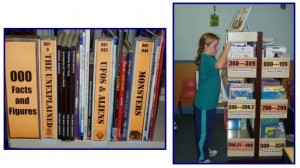
Explicit, clear signage allows for independent selection.

Hanging signs made from cheap, lightweight models strung together with fishing line mean even the youngest user can find the section they want.
The teacher librarian is often regarded as the copyright manager and thus it is worthwhile developing documentation that details what is allowed to be copied and under what conditions. While staff and students may have access to official copyright sites such as Smartcopying in Australia, providing a ready reference for the most common situations will empower clients to make their own decisions.
Programs
Because we are teacher librarians our teaching programs have to be as explicit and professional as those required of our classroom-based colleagues. We need to identify what we want students to know, do, understand, appreciate and value as a result of our teaching and this has to be explicitly identified in the preamble and rationale of our programs. Not only does it emphasise the teaching aspect of the position, it demonstrates why the TL must hold dual qualifications. Programs must
- be based on current best-practice pedagogy
- reflect our knowledge of the curriculum
- demonstrate the AITSL professional teaching standards
- embrace education authority-based initiatives like Quality Teaching
- support identified school-based priorities
- focus on inquiry-based learning and information literacy
- promote cyber safety and digital citizenship
- develop online competency
The American Association of School Libraries has identified a set of standards for the 21st Century Learner that could well underpin the programs of all of us, regardless of location or sector. They cover four broad categories
| inquire, think critically and gain knowledge |
| draw conclusions, make informed decisions, apply knowledge to new situations and create new knowledge |
| share knowledge and participate ethically and productively in our democratic society |
| pursue personal and aesthetic growth |
Within each category, there are skills, dispositions in action, responsibilities and self-assessment strategies that permeate every level and strand of the curriculum. The document provides an authoritative base on which to build any teaching platform but also highlight the specialist nature of the TL’s role.
promotion
As well as those teaching-based programs, there are also promotion programs such as the Premier’s Reading Challenge, Children’s Book Week, World Read-Aloud Day, National Poetry Month and so forth that can help put the library at the hub of what happens in the school. However, because it is possible to have something new every week, it is essential that as the TL we pick and choose judiciously those events which will receive a heightened focus. Once an event has been selected, it is worthwhile creating a file that explicitly links the event to the teaching and learning outcomes within the school and promoting this to teaching staff so they immediately identify how it will add value to the curriculum. Including information about resources used or activities undertaken means there is a ready-reference if the same event is chosen in subsequent years.
Most schools are required to produce an annual report each year do parents are informed about what has been achieved and accomplished. Contributing a section about the achievements of the library to this is formal way of alerting administrators, executive, staff and parents to the doings of the library and how funds, including the salaries of the library staff have been invested in teaching and learning outcomes. An even more extensive report such as this one by Joyce Valenza for the Springfield Township High School Library can be produced and made available through the school library’s website. As well as encapsulating data, it could also be an outlet for your Junior Journalists as they report on the key activities that have taken place throughout the year. Take photographs and videos of special events so they can be included.
It is also worthwhile to regularly gather statistics such as patron usage, resource acquisition and circulation and other relevant data several times throughout the year so a snapshot can be provided and analysed. User satisfaction reports from staff, students, school leavers and parents can also provide valuable evaluative information, as well as demonstrating growth and change. Creating a well-rounded, well-balanced annual report not only demonstrates professionalsim but can also demonstrate how well you are adhering to and working towards your strategic plan as well as giving pointers for improvement.
Less formal promotions such as supporting parent participation programs or producing a pamphlet to assist parents with reading with their child at home are all part of the paperwork but all contribute to that evidence-based practice that is so critical.
propaganda
There are many ways to advertise the library’s services that involve informal paperwork and these will be examined in The Promoter’s Hat.
Putting on your paperwork hat, as ill-fitting as it might feel, goes a long way to declaring and demonstrating your professionalism.


